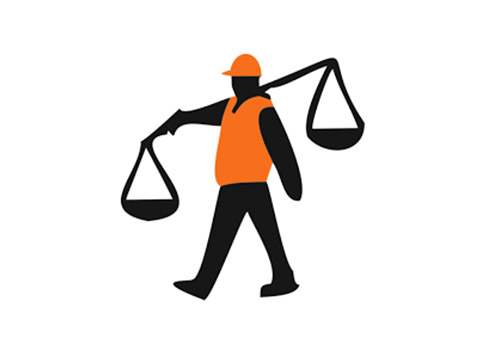This article is written by Gurpreet Singh, from the Faculty of Law, Delhi University. This article aims to track the history of labour law and to inform the readers about new amendments introduced by the Indian Parliament.
Table of Contents
Introduction
One must have witnessed the iconic Amitabh Bachchan in the movie Kaala Patthar, where coal workers were exploited by the contractors and no one came to their aid unless Amitabh Bachchan revolted. Fortunately, in the 21st century, there is a belief that we have developed safety valves for our workforce to protect them from tyranny. This article will take you through the development of labour law and its eventual evolution.
What are Labour Laws
Labour laws are a set of laws that govern the rights and liabilities of persons employed in an organization and that of the organization as well. They act as a medium between workers, organizations, and the collectivity of workers i.e trade unions. They can be divided into two categories, one that governs the relationship between the employer, employee, and the trade unions; and the second deals with the individual rights of employees. They define rights and liabilities of workers, trade unions, and employers as well, Labor law entails within its ambit the following:
- Industrial relations – This covers within its ambit the unfair labor practices and working of trade unions.
- Workplace safety – This covers the safety requirements and redressal mechanisms in case of any untoward incident.
- Employment standards – This covers the layoff procedures, working hour regulations, minimum wages including a provision regarding leaves.
Requirement of Labour Law
Labour law works on a basic premise that industries are promoters of development and it is in the best interest of the nations to let them function in a congenial environment, but on the flip side protection of the nation’s workforce is the sole responsibility of the nation’s governments. Labour laws are also required to assure the workers that their interests will be protected in case of infringement of their rights.
History of Labour Laws
Labour laws can be traced back to varied parts of the world. European scholars laid emphasis on the importance of the guilds and apprenticeship systems prevalent in medieval times. On the other hand, Asian scholars trace labour laws back to the Babylon code (18th century BCE); and on the laws of the Manu as well, Meanwhile American authors guide us towards the law of the Indies enunciated in Spain in the 17th century for its ramping society.
They were developed as the result of the industrial revolution during the 18th century. It became essential to stop the unfair treatment meted out to the workers, as the rate at which the industries were going at the cost of labour was a disaster, on the flip side with the french revolution in the picture, society was moving towards social justice so as the cumulative result of conflict, labour laws were brought in the 18th century, but in the true sense, they received acceptance in the 20th century.
Deliberations are undertaken by countries to establish effective Labor Laws
Britain – Whitley commission advocated for industrial councils to be set up throughout the world. A conference was held in February 1918 attended by the delegates of Britain, France, Belgium, and Italy which championed the cause for establishing an International labour rights body and easing the diplomatic procedure to benefit the labour.
America – American Federation of Labor published an apolitical report that advocated for strengthening the collective bargaining process and improving the lives of persons currently engaged in industries.
The build-up to the International Labour Organization
At the end of WWI, two viewpoints emerged to make amends for the future. The International Federation of Trade Unions (IFTU) called for a meeting in Berne and it advocated changes for the future and had a look at the changes that were made in the past. The Americans boycotted this meeting, however, some consensus was achieved and certain demands such as ending wage labour and establishing socialism, along with these demands the IFTU also advocated for establishing an international body associated with the league of nations that would enforce labour legislation around the world.
The British advocated for establishing an international parliament that would help in the implementation of labour laws in countries associated with the league of nations. Each nation would be represented by two of its delegates in the parliament. An office would be created to collect data on labour issues. Some of the members from the American side were not convinced about the concept of labour office and recommended that the office should only be empowered to make recommendations and enforcement should be the forte of the league of nations. The British vehemently opposed this idea, but the American proposal was adopted. The American side made certain proposals that were also accepted are as follows:
- Labour should be treated as human beings and not commodities.
- The right to minimum wages should be protected.
- There should be no wage disparity between men and women.
- Equal pay for equal work.
- The right to form associations is inherent and should be protected.
- Child labour below the age of 14 should be abolished.
- An eight-hour workday or a 40-hour workweek should be the norm across the globe.
- Six-day working should be an established norm.
- Foreign workers to be treated on par with domestic workers.
- Condition of factories should be made habitable and congenial work environments should be pushed.
The final report was submitted by the Commission on 4th March and was adopted on 11th April. The report was an integral amalgamation of the Treaty of Versailles. The first International labour conference began on 29th October 1919 in Washington DC and adopted the international labour conventions which dealt with the following issues:
- Maximum working hours;
- Benefits for women during the period of maternity;
- Prohibition of women to work in the night; and
- Regulating working hours for the young.
The French socialist, Albert Thomas, became the Director-General. The ILO became a part and parcel of the United Nations after the League of Nations was abolished.
Labor Laws in India
Labor Laws in India can be further divided into:
During the British raj
The laws were incorporated to benefit the prospects of the business and to adhere to certain norms established by the International Labour Organization. Here is a list of laws passed during that time:
Factories Act, 1883 – This Act was incorporated by the British to fix certain working conditions such as 8 hours of working hours, the prohibition of women in night employment, and the abolition of child labour. This Act also stipulated for overtime wages,
- Trade Disputes Act, 1929– This Act was passed to regulate the relations between the employer, employees, and the unions of employees. Provisions were inculcated to curb the rights of unions to conduct strikes and of employers to declare a lockout. This was done to make sure industrial progress is not halted.
After Independence
Independent India was formed on the idea of social justice. Following are certain enactments keeping in mind the larger objective:
- Factories Act, 1948 – This Act deals with provisions such as working hours, safety, and safety of women workforce.
- Minimum Wages Act, 1948 – This Act ascertains the minimum wages that have to be paid to skilled and unskilled workers. The minimum wages have to be proportional to the work undertaken.
- Industrial Disputes Act, 1947 – This is one of the most important legislations that intends to promote industrial peace and harmony and to promote growth. This piece of legislation intends to solve industrial disputes through arbitration and adjudication.
- Child Labor Prohibition Act- This Act was brought in to fulfil the constitutional objective to prevent exploitation. The act prevents children below 14 years old from being employed in hazardous jobs.
The interesting point to note is that the labour laws find a mention in the concurrent list of the Constitution, which means both state and centre can draft and implement laws regarding the same. There are 200 state laws, 40 central laws, still, that daunting image of a child sleeping on a bag that is being dragged on by a worker will haunt us in the coming times. An attempt has been made by the central government to combine the various laws into codes. Following is the list of codes:
Code on wages
The aim of the code was to consolidate various laws on wages and to ease out the payment of wages. The followings Acts are being combined into one:
- Payment of Wages Act, 1936;
- Minimum Wages Act, 1948;
- Payment of Bonus Act, 1965; and
- Equal Remuneration Act, 1976.
Certain changes that are being introduced are that Section 6 of the Code empowers the central and the state governments as well to fix minimum wages for all employees covered by the code, unlike the Minimum Wages Act, 1948, which provided for fixation of minimum wages mentioned in the schedule of the Act. Moreover, under Section 9 of the Code, the central government will fix the floor wages considering the working conditions of the workers and the state government cannot fix minimum wages below what the centre has envisaged under the floor rates.
Code on industrial relations
This code offers certain relaxations, retrenchment, strikes, and lockouts. The followings are the acts brought under this code:
- Trade Unions Act, 1926;
- Industrial Employment (Standing Orders) Act, 1946;
- The Industrial Disputes Act, 1947.
Certain changes that are being made is that the definition of the industry, mentioned in the Industrial Disputes Act under Section 2(p), has been modified and the exceptions mentioned under Section 2(j) have been deleted. Such as hospitals and dispensaries, educational, scientific, research or training institutions, khadi or village industries. Any activity that is considered as a profession practised by an individual or body of the individual. Definition of the industrial dispute under Section 2(k) is also expanded to include within its ambit, discharge, dismissal, retrenchment, or termination of workers.
Code on social security
This code prescribes social security for workers. It has replaced the following Acts:
- The Employees Provident Fund Act, 1952;
- The Employees State Insurance Act, 1948;
- The Maternity Benefit Act, 1961;
- The Payment of Gratuity Act, 1972;
- The Employees Exchange (Compulsory Notification Of Vacancies) Act, 1959;
- The Employees Exchange (Compulsory Notification of Vacancies) Act, 1959;
- The Cine Workers Welfare Fund Act, 1981;
- The Unorganized Workers Social Security Act, 2008; and
- Employees Compensation Act, 1923.
One of the scintillating features of the code is that now it includes within its ambit gig workers, platform workers, and unorganized workers. This code envisages protecting the gig workers as well. They are defined as a person who performs work in an unconventional setup and earns from the relationship outside that of employer-employee This will probably cover workers who are working for food delivery and e-commerce delivery services. Platform workers refer to those workers who also cannot be confined to the employee-employer relationship and are employed by organizations to access other organizations via internet platforms to solve specific problems or provide specific services.
The code on occupational safety, health, and working conditions
This code prescribes standards for working conditions, health, and safety of working conditions. The code replaces 13 of the previous laws. Some of them are listed below:
- The Factories Act, 1948;
- The Mines Act, 1952;
- Building and Other Construction Workers (Regulation of Employment and Conditions of Service) Act, 1996; and
- The Contract Labour (Regulation and Abolition) Act, 1970.
The code empowers the state government as well to exempt any new factory from the provisions of the new code. The government has also processed mechanisms to ease out-licensing for contracting firms to hire across the country. And introducing gender parity, The government has granted access to women to work in positions as they were prohibited earlier.
Conclusion
Through the course of the article, we have tracked the development of labour laws and have given a brief overview of the latest amendments introduced by the Indian government. With the COVID-19 pandemic wreaking havoc on the economies around the world, labour laws need to be modified albeit precaution that they do not transform into a tool for harassment and exploitation.
References
- https://www.iasexpress.net/labour-laws-in-india-purpose-history-ongoing-reforms/#section-5
- https://ncib.in/pdf/ncib_pdf/Labour%20Act.pdf
- http://www.legalserviceindia.com/legal/article-1010-the-evolution-of-labour-law-in-india.html
LawSikho has created a telegram group for exchanging legal knowledge, referrals, and various opportunities. You can click on this link and join:












